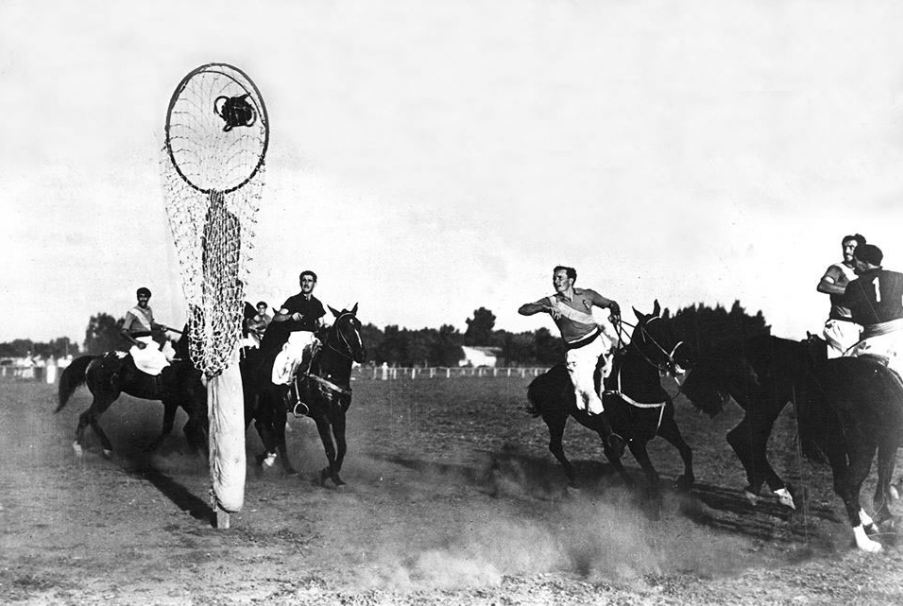Football (soccer) is Argentina’s most popular sport, being the home of legendary athletes like Messi and Maradona. Polo is in a league on its own, with Argentine players widely deemed as the best in the world. Yet, you might be surprised that the country’s national sport is neither of the two. Pato, literally meaning “duck” in Spanish, holds the status following its declaration in 1953. The sport traces its history way back from the 17th century, in a form far from what it is today. In this article, let’s know more about pato, its roots, and how it came to be Argentina’s national game.
History
Chronicles from 1610 characterize a sport played by two teams while on horseback. The players from the opposing teams fight for the possession of a ball, a leather hide sack with a literal live duck inside. Thus, the name of the wildlife-violent sport. Of course, apart from the extreme terror, things always didn’t fare well for the duck.
While it may seem relatively safer for the player than the web-footed animal, odds weren’t also on the side of the gauchos. Often played due to rivalry between farms, the sport was bloody and ruthless, leading to injuries, with some players even being trampled to death amidst the skirmish. Fortunately, it was banned soon because of the violence.
Due to personal disasters, people stopped playing the sport but have never actually forgotten it. In the 1850s, numerous writings were released, reviving the interest in the sport, but from varying perspectives.
Jumping to 1937, Alberto del Castillo Posse, an admirer of the popular entertainment tradition, initiated an exhibition game that stirred enthusiasm among the participants. He modernized the sport and designed the new saddle and a white leather ball with six handles (sans the duck).
Also governed by the new rules, the first competition was held on March 31, 1938. Several organizations were established for the cultivation of the sport and the tradition. And, in 1953, Pato was declared as Argentina’s national sport, citing its historical value and as a game played by true Argentineans.
Gameplay
Teams are composed of four highly skilled riders who will compete for the possession of the pato (ball) with six equidistant handles. Each jinete (rider) must handle the pato using his right arm while keeping it outstretched, allowing the opposing team to snatch the ball from the player. The tugs called “cinchadas” are usually the most thrilling part of the gameplay. A penalty will be imposed on his team if a jinete fails to extend his arm while in control of the pato.
The end goal is to get to the end of the field and shoot the ball through a vertical ring, seemingly like basketball. Whichever team finishes more goals after the regulation time (or six 8-minute periods with 5-minute breaks between periods) is declared the winner.
Strict rules are implemented in terms of equipment as the players are required to wear a riding crop, white breeches, and a helmet. Of course, sportsmanship and fair play are also keenly observed, with reckless movements also being penalized. Meanwhile, rules concerning horses state that they should be tame and be standing more than 150 centimeters.
If you’re having a hard time picturing how the game progresses, you can think of the Quidditch game in the fictional series Harry Potter. They pretty resemble each other, except that players are on horseback instead of flying in broomsticks. But, expect the game to be as exciting, and you’ll love all the moves and the adrenaline rush.
Status
Nearly seven decades after its declaration as Argentina’s national sport, its status has been marred by controversies. Virtually all Argentines are avid football enthusiasts and players, while only about 10% percent have seen an actual pato match. Plus, there are only a few thousand pato players in the country, creating a huge disparity in terms of reception and participation in those two sports.
Bills have been submitted to relegate pato as a traditional sport and make football the country’s national game. Despite several attempts, pato keeps its status, with defenders of the sport citing that pato originated from Argentina, while football came from England.
Where to See Pato
Pato is not exclusive for professionals as amateurs can also enjoy the sport. As the field required for the game is relatively large, it is usually played outside cities, but there are available venues just an hour to two from the urban centers.
For spectators, pato tournaments are held in Argentina from February to mid-December. The most popular among the tournaments is the Argentine Pato Open (Abierto Argentino de Pato), where the best and most famous pato clubs from the country battle their hearts out.
Final Words
From its brutal past, pato has evolved into the exciting and healthy team sport it is today. While not many favor or appreciate the game compared to other mainstream ones, its authentic Argentinean heritage will continue to support its trots to remain the country’s national sport.

